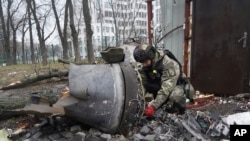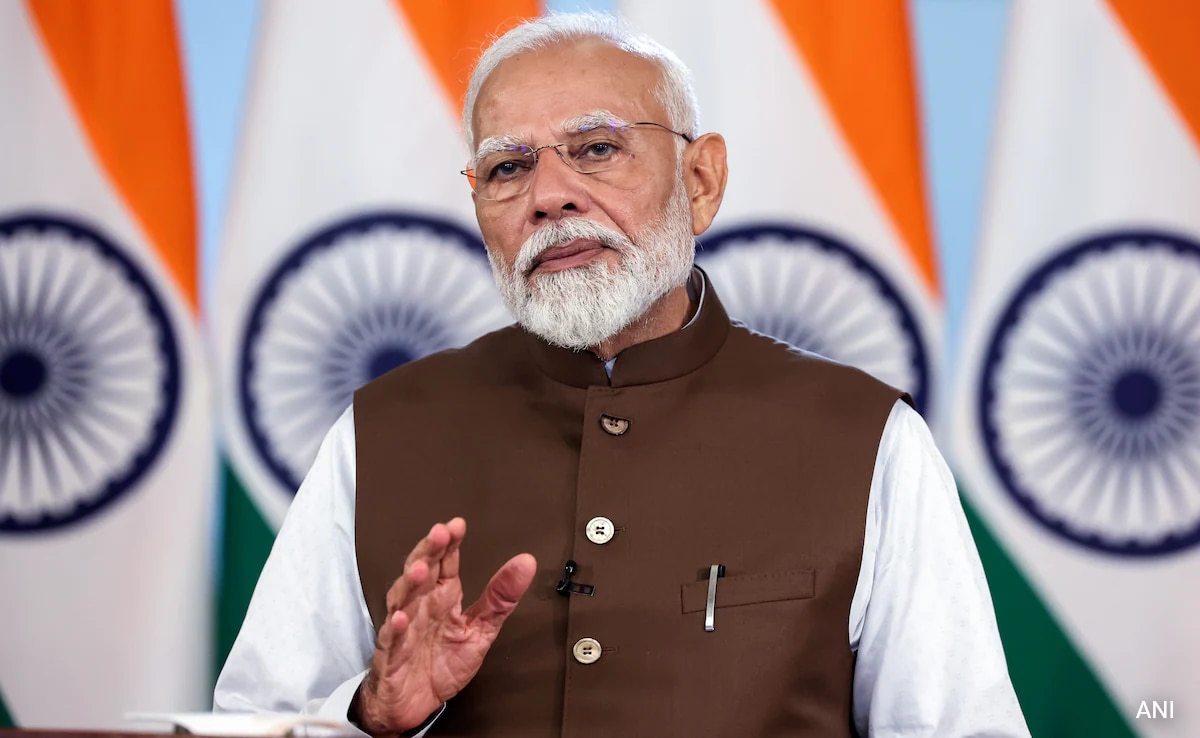Analysts say a North Korean missile found in Ukraine has more than 200 components from U.S. and European companies, exposing loopholes that North Korea uses to evade sanctions.
South Korean Defense Minister Shin Won-sik said at a news conference on Monday that North Korea is operating its arms factories at full capacity to provide Russia with the weapons it needs to fight Ukraine.
Shin said South Korea estimates Pyongyang has sent about 6,700 containers to Russia since September, South Korean media reported.
The United States gives even higher figures, estimating that North Korea has shipped more than 10,000 containers of ammunition or ammunition-related materials to Russia since September.
The United States announced the estimate on Friday and imposed sanctions on more than 500 individuals and entities in Russia.
North Korean weapons have been on Ukrainian battlefields since December, according to Ukrainian security services. Russia has since launched at least 20 North Korean missiles into Ukraine, it said on Thursday, adding that the missiles had caused civilian casualties.
At a press conference held on January 26 by Foreign Ministry spokesperson Maria Zakharova, Russia denied any military or technical cooperation with North Korea.
VOA contacted North Korea’s mission to the United Nations in New York for comment but did not receive a response.
Investigators determined that a missile discovered in Kharkiv, Ukraine’s second largest city, on January 2 was Made on February 20 using components from American and European companies.
The CAR report found that of the 290 components of North Korean missiles inspected, about 75 percent originated from U.S. companies. About 16% of the components are related to European companies.
The report stated that more than three-quarters of the components were produced between 2021 and 2023, and the missile is unlikely to be produced before March 2023. However, the report states that CAR “will not disclose the companies associated with its production.”
Since the adoption of Security Council Resolution 1718 in 2006, UN member states have been prohibited from exporting materials and technology that North Korea could use to build ballistic missiles.
Experts say U.S. companies whose parts end up in North Korean missiles may not know the identities of the end users.
However, Aaron Arnold, a former member of the United Nations expert panel on North Korea sanctions, said the findings showed “how porous the Western export control system is.”
Arnold, currently a senior research associate at the Royal United Services Institute’s Center for Financial Crime and Security Research, told VOA via email on Friday that some of the items in North Korea’s missiles could be used to make weapons and goods.
“While I can’t say for sure in this particular case, some microelectronics are dual-use, meaning they could be commonplace and used in other commercial applications,” Arnold said. “For example, the ones found in Russian drones Some of the Western microelectronics devices are also used in refrigerators.”
Bruce Klingner, senior fellow for Northeast Asia at the Heritage Foundation, said in an email to VOA on Monday that in addition to dual-use items, “the focus of sanctions enforcement should be on the more important components.”
Such components may include “non-domestic electronic components” that CAR reports have been found in North Korean missiles.
Arnold and other experts said North Korea’s practice of using third-party countries to smuggle prohibited items makes it difficult to detect parts entering the country. But they said existing procurement networks could be used to track missile components to identify middlemen.
“One of the biggest challenges is going after those who are helping North Korea evade sanctions,” Anthony Ruggiero, a senior fellow and sanctions expert at the Foundation for Defense of Democracies, said in a phone interview with VOA on Friday.
He continued, “China, Russia, North Korea, Iran — these countries are experts at avoiding U.N. and U.S. sanctions. They are smart enough not to use their names or suggest that Russia, North Korea, Iran or China are trying to buy oil .” these items. Part of the challenge is lifting that veil. “
Joshua Stanton, a Washington lawyer who helped draft the Sanctions and Policy Enforcement Act in 2016, said by email that the findings could “give the Commerce Department the opportunity to trace North Korea’s procurement network from the supply chain various components and intermediaries on its Entity List.”
Follow us on Google news ,Twitter , and Join Whatsapp Group of thelocalreport.in

















